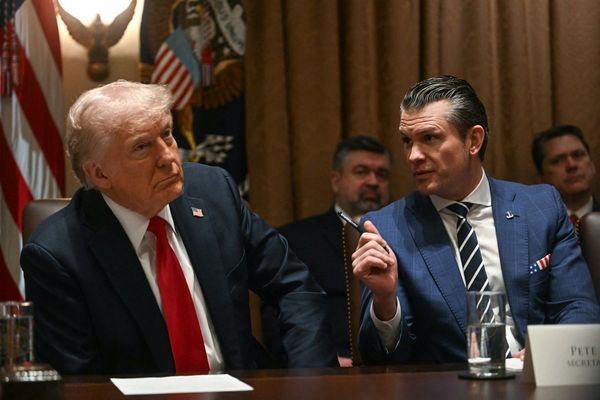
America's electric vehicle tax credits are changing yet again, and this time they're going to be more accessible than ever. If you've been waiting to buy an EV, now might be the moment you've been holding out for.
Last year, the Inflation Reduction Act introduced a new set of modernized tax credits for new and used electric and plug-in hybrid cars. But starting January 2024, they'll be less like breaks you can claim on your annual tax refund and more like discounts you can apply to a car right when you buy or lease it.
Buyers of new and used "clean vehicles" will soon be able to transfer the credit amount to the point of sale, meaning they can theoretically drive out of a dealership or retail location with an EV for significantly less money than before—no waiting for their money back in April or later. Effectively, a dealership will take the credit amount off the vehicle’s price, and then the IRS will repay the dealership within 72 hours of a completed transaction.
Yeah, it's a big deal. While the IRS’ updated rules are new, they were not unexpected. When the Inflation Reduction Act was passed in August 2022, the original legislation mentioned that the point-of-sale feature would begin in 2024. However, there was little information about how it would work. Today, the IRS is making this information public.
Here's what we know and how it affects you.
A Brief History Of EV Tax Credits

Tax credits for clean vehicles are not new for U.S. consumers. Buyers of new plug-in hybrids, FCEVs, and EVs have been able to score tax credits of up to $7,500 dating back to the late 2000s. This tax credit remained largely unchanged until Jan. 1, 2023, when the Inflation Reduction Act’s provision came into place. To make a long story short, this new tax credit favored North American-built EVs and batteries and limited the demographics of individuals who wanted to use it.
Once this came into effect, a number of electrified vehicles no longer qualified for a tax credit. The Chinese-made Polestar 2, British-built Mini Cooper SE, and German-built BMW i4 were just a handful of cars that lost their qualification statuses due solely to their manufacturing location.
Moreover, the IRA EV tax credit implemented vehicle MSRP caps: $55,000 for sedans and $80,000 for trucks and SUVs. Used vehicles could also qualify, though they faced a more-limited $25,000 limit. This addition led to some more costly options losing out on their credits. Entrants like Lucid saw their customers no longer able to acquire the credit thanks to their high price points.
The other notable addition to the IRA was income limits. New EV buyers would be subject to these income limits: $300,000 for joint, $225,000 for head-of-household, and $150,000 for single filers. Used EV buyers would face an even stricter limit: $150,000 for joint, $112,500 for head-of-household, and $75,000 for single filers.
Despite the additions, the tax credit was fundamentally the same. The credit acted just like the old one, and was non-refundable. For instance, if a person were to purchase a Tesla Model Y in 2023, he or she would be able to claim the $7,500 credit in the following season. If a buyer owed $5,000 in taxes, that person could only appropriate $5,000 off his or her taxes.
This was an issue some critics saw with the credit. People with lower tax burdens or those who already had a number of write-offs could not reap its full benefits. The updated rules should fix this and make EVs more affordable upfront.
What's Changing In 2024?

Again, starting next year, you get the reduced price right when you buy the car.
For a vehicle purchase to qualify, dealerships interested in transferring the credit must sign up with a new website called IRS Energy Credits Online to become a registered dealer. Once registered, the dealership can transfer the credit to the point of sale.
Take the hypothetical taxpayer mentioned earlier who has a tax burden of $5,000. With the new point-of-sale credit, that person can make off with a $7,500 reduction in the purchase price of their shiny new EV. In other words, consumers who score a credit for more than their tax burden won’t have to owe the IRS anything come tax season.
(Now, as Motor Trend noted recently, the dealers are sweating this a bit; they're wondering when they'll actually get their money. And considering the federal government isn't exactly known for its blinding speed, I can't really blame them.)
That said, people making over the income cap by the end of the year they claim the credit will not be in a beneficial spot. Say a single filer makes $150,001 in a given year and purchases an EV with a point-of-sale credit; he or she will actually have to pay back $7,500 taken off the car’s MSRP for the tax credit.
Buyers can still claim the credit normally. This makes sense for individuals on the brink of making more money than the respectable income caps.
New electrified vehicles, at a minimum, must have a battery capacity of at least 7-kilowatt hours, undergo final assembly in North America, and meet critical mineral and battery component requirements (read: not made in China) to qualify.
Here are the qualifying vehicles and their applicable credit values:
Vehicles With $55,000 Cap
Chevrolet Bolt EV: $7,500 credit
Chevrolet Bolt EUV: $7,500 credit
Chevrolet Equinox EV: $7,500 credit
Tesla Model 3: $7,500 credit
Vehicles With $80,000 Cap
Cadillac Lyriq: $7,500 credit
Chevrolet Blazer EV: $7,500 credit
Chevrolet Silverado EV: $7,500 credit
Chrysler Pacifica: $7,500 credit
Corsair Grand Touring: $3,750 credit
Ford E-Transit: $3,750 credit
Ford Escape: $3,750 credit
Ford F-150 Lightning: $7,500 credit
Ford Mustang Mach-E: $3,750 credit
Jeep Grand Cherokee 4xe: $3,750 credit
Lincoln Aviator Grand Touring: $7,500 credit
Rivian R1S: $3,750 credit
Rivian R1T: $3,750 credit
Tesla Model X Long Range: $7,500 credit
Tesla Model Y: $7,500 credit
Volkswagen ID.4: $7,500 credit
X5 xDrive50e 2024: $3,750 credit
Used clean vehicles can be fuel cell EVs, plug-in hybrids, or pure EVs. They must have a battery size of at least 7 kilowatt hours, be at least two model years old, sell for under $25,000, and not have been transferred to a qualified buyer after August 16, 2022. The latter portion indicates that a used electric vehicle that has already been purchased (regardless of price) second-hand after August 16, 2022, will not qualify for the $4,000 credit.
For buyers wanting to know if a used vehicle will qualify for the tax credit, Recurrent’s EV Qualification Tool helps prospective owners understand if their desired vehicle is eligible.
Let's Talk Loopholes

For buyers who are extra sneaky, there is a loophole of sorts baked into the credit.
Namely, if someone were to lease an EV, they could have the credit built into their lease payments. This works on all EVs, regardless of manufacturing location. Then, if they agree to buy out the vehicle at the lease’s end for under $25,000, that individual can obtain the $4,000 used EV credit on that purchase. The lucky buyer could effectively get $11,500 in tax credits for that purchase.
But it's crucial to remember what a big deal this is. The revised electric car tax credit is the most significant change for new and used EV consumers since its inception last year. With a point-of-sale feature, consumers can receive unparalleled purchasing stimuli, potentially drastically reducing the price of electric cars. With the ability to make clean vehicles more accessible to all, these updated rules will alter the automotive landscape yet again.
FAQs
What EV are you thinking of buying next year? Sound off in the comments.







